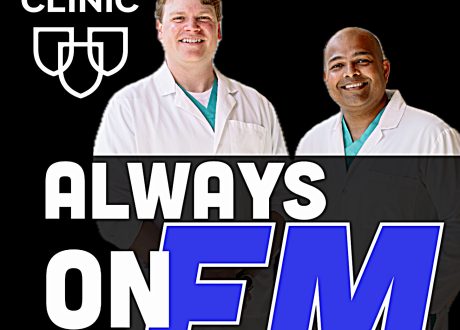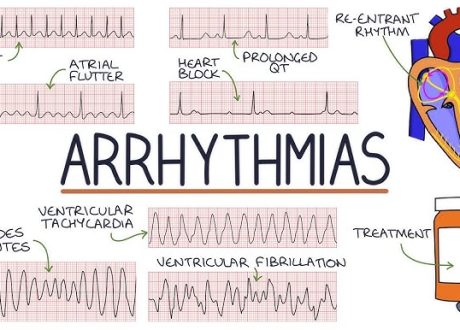Poxviruses that infect humans range from life-threatening smallpox virus to the very contagious but benign molluscum contagiosum virus. Beginning in May 2022, hundreds of cases related to another poxvirus, monkeypox, have been reported from more than 30 countries around the world, including the US.
Monkeypox virus was first isolated in 1958 from monkeys at the Statens Serum Institut in Copenhagen, Denmark—thus its name; however, the natural host of monkeypox virus also includes rope squirrels, tree squirrels, Gambian pouched rats, and dormice. As with many zoonoses, this poxvirus is transmitted incidentally to humans when they encounter infected animals. The first known human case of monkeypox was recorded in 1970 in the Democratic Republic of the Congo.
Prior to 2022, imported human cases outside the continent of Africa have been observed rarely. In 2003, monkeypox cases were reported in the US when a shipment of infected Gambian pouched rats subsequently infected prairie dogs housed in the same facility and eventually infected 71 humans who adopted these animals as pets.1 In 2018, 2 people who had traveled to Nigeria brought the disease to the United Kingdom, and a secondary monkeypox infection was documented in a health care worker.2 Over the past 5 years, hundreds of cases of monkeypox have been reported in Nigeria, with many cases among men, some who had genital lesions, suggesting human-to-human transmission via sexual contact.3
The 2022 Monkeypox Outbreak
The current outbreak illustrates the easy human-to-human transmissibility by direct, intimate contact with lesions that contain the virus. Since early May 2022, monkeypox cases have been reported from multiple countries where the disease is not endemic. As of June 9, 2022, more than 1350 laboratory-confirmed cases of monkeypox have been reported from 31 nonendemic countries worldwide,4 with approximately 60% reported from 3 countries: Portugal, Spain, and the United Kingdom. As of June 9, 2022, the US Centers for Disease Control and Prevention (CDC) reported 45 cases across 15 states and the District of Columbia.5
The majority of reported cases have no travel-related link to an endemic country, and most cases have been among men who have sex with men, raising the possibility of sexual transmission. While monkeypox is not a sexually transmitted infection in the typical sense, it can be easily transmitted during sexual and intimate contact. Inoculation of the virus to skin and mucosal surfaces occurs by direct contact, sexual or skin to skin, and may even include transmission via fomites such as towels, bedding, and sex toys.
Viral Clades and Pathology
There are 2 known distinct clades of monkeypox virus, 1 endemic to West Africa and 1 to the Congo Basin. The Congo Basin clade has historically caused more severe disease and is thought to be more transmissible. The current monkeypox outbreak appears to be caused by the West Africa clade.
The pathology of monkeypox, like all poxviruses, is characterized by prominent intracytoplasmic eosinophilic inclusions in epithelial cells. Other changes observed in the epidermis may include ballooning degeneration, keratinocyte necrosis, and hyperplasia. The dermis presents lymphocytic inflammation, and as ulceration takes place, there is infiltration by neutrophils, eosinophils, and multinucleated giant cells. Inflammation around vessels (vasculitis) is also present.
Clinical Symptoms
Monkeypox has a wide incubation period ranging from 5 days to 3 weeks. Patients typically present with fever, chills, fatigue, headache, muscle aches, sore throat, lymphadenopathy, and skin lesions. The skin lesions evolve from macules and papules to vesicles and pustules that ulcerate and crust before healing over several weeks. The skin lesions usually occur in crops. The initial lesions are usually at the site of inoculation, which may explain why in the current outbreak lesions have been located on or near the genitalia or anus. Most often, monkeypox infection is self-limited, usually lasting 2 to 4 weeks.
Complications may include pneumonia, encephalitis, and eye infections, which occur mostly in children younger than 8 years, pregnant people, or individuals who are immunocompromised. The mortality rate is estimated between 1% and 11%.6 During the US outbreak of 2003, a family who had acquired an infected prairie dog demonstrated the spectrum of disease: a 6-year-old child was hospitalized with encephalitis; the child’s mother was symptomatic and had multiple skin lesions; and the child’s father, who had been vaccinated against smallpox, had only 2 skin lesions and mild flu-like symptoms.7
Diagnosis
The differential diagnosis of monkeypox includes other poxviruses and herpesviruses, including chickenpox. The clinical diagnosis of monkeypox must be confirmed using laboratory methods, which currently only are available at state public health departments, where screening polymerase chain reaction is performed, and positive cases are sent to the CDC for specific clade confirmation. Samples for diagnosis of monkeypox should be collected using a nylon, polyester, or Dacron swab and preferably obtained from an open skin lesion. The swabbed specimen should then be placed in a dry, sterile container and kept refrigerated or frozen until testing. Additional details can be obtained from the CDC and state health laboratory websites.
Prevention
Prevention of monkeypox infection can be challenging for individuals who have close contact with an infected patient. Avoiding direct contact with skin lesions or with materials used by patients with monkeypox (such as clothing, bedding, and towels) is essential to decreasing infection risk. Clinicians caring for patients with skin lesions should use personal protective equipment including gown, gloves, eye protection, and a fitted N95 mask. A patient with suspected or confirmed monkeypox infection should be masked immediately, have lesions covered with a gown or sheet, and be placed in isolation in a single-person room. No special air handling is required, but if a patient is admitted to the hospital for care, they should be placed in a negative-pressure room if available. For environmental infection control, standard cleaning and disinfection procedures are sufficient, but soiled laundry should be handled with gloves to avoid contact with lesion material that may be present on the laundry.
Smallpox vaccination is thought to provide up to 85% cross-protection against monkeypox, though the duration is unknown.8 Some public health experts have suggested that the resurgence of monkeypox is due in part to the end of routine smallpox vaccination after the disease was eradicated in 1980.9 There are currently 2 licensed vaccines available to prevent smallpox in the US: ACAM2000 and JYNNEOS (also known as Imvamune or Imvanex), which is a live, nonreplicating, modified vaccinia virus Ankara vaccine. While JYNNEOS is the only vaccine currently approved by the US Food and Drug Administration (FDA) to prevent monkeypox, the Advisory Committee on Immunization Practices recommends that individuals with occupational exposure to orthopoxviruses (eg, researchers who work with monkeypox virus samples) receive the ACAM2000 or JYNNEOS vaccine as preexposure prophylaxis.
Postexposure vaccination with JYNNEOS can also be given to patients who have had close contact with an individual infected with monkeypox virus. The CDC recommends vaccination within 4 days of exposure to prevent disease or up to 14 days after exposure to reduce severity of disease.8 More than 36 000 doses of the JYNNEOS vaccine are currently in the US Strategic National Stockpile. Although the CDC has recommended that the JYNNEOS vaccine be offered to close contacts of patients with monkeypox, this vaccine is currently not easy to access.
Treatment
Treatment for monkeypox is mostly symptomatic, as there is currently no specific antiviral treatment. Persons with severe disease, immunocompromised patients, children younger than 8 years, and pregnant individuals should be considered for antiviral treatment following consultation with the CDC.10 There are currently 2 antiviral drugs that may be used for monkeypox infections: tecovirimat and brincidofovir. Tecovirimat prevents formation of the viral envelope by inhibiting p37, a highly conserved protein in all orthopoxviruses. Tecovirimat was approved by the FDA for treatment of smallpox in 2018, and the CDC holds an Expanded Access–Investigational New Drug (EA-IND) protocol that allows for its use in nonvariola orthopoxviruses such as monkeypox virus.
Brincidofovir is a prodrug of cidofovir, a drug approved for the treatment of cytomegalovirus (CMV) retinitis in patients with AIDS. Severe kidney toxicity or other serious adverse events have not been observed with brincidofovir during treatment of CMV infections, so it may have a better safety profile than cidofovir, but clinical experience is limited. Brincidofovir was approved by the FDA for treatment of smallpox in 2021, and, as with tecovirimat, the CDC holds an EA-IND that allows for use with monkeypox virus. However, brincidofovir is currently not available in the US Strategic National Stockpile.
Intravenous vaccinia immune globulin (VIGIV) may be considered for patients with severe monkeypox infection or as prophylaxis in exposed individuals with T-cell immunodeficiency, for whom smallpox vaccination is contraindicated. However, it is currently unknown whether these individuals with monkeypox infection will benefit from treatment with antiviral agents or VIGIV. To access any of these monkeypox therapies, clinicians should contact their state and territorial health authorities, who can then obtain recommendations from the CDC Emergency Operations Center (404-488-7100).
Conclusions
Monkeypox virus is a highly contagious orthopoxvirus that is currently causing a global outbreak, primarily among men who have sex with men. Control of this growing international outbreak will require careful coordination among public health officials, clinicians, and the community to disseminate information, obtain appropriate diagnostic testing, implement contact tracing, and ensure that affected individuals and their contacts have access to medical care.
Corresponding Author: Jeannette Guarner, MD, Department of Pathology and Laboratory Medicine, Emory University School of Medicine, 1364 Clifton Rd, Atlanta, GA 30322 (jguarne@emory.edu).
Published Online: June 13, 2022. doi:10.1001/jama.2022.10802
Conflict of Interest Disclosures: Dr del Rio reported receipt of grants from the National Institutes of Health/National Institute of Allergy and Infectious Diseases to his institution. No other disclosures were reported.










